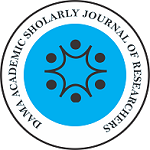Authors: Yudied Agung Mirasa1, Ririh Yudhastuti2, Chatarina Umbul Wahyuni3, Mateus Sakundarno Adi4
1Doctoral Program, Faculty of Public Health, Airlangga University, Indonesia / Technical Centre for Environmental Health and Disease Control, Surabaya, Indonesia
2,3Faculty of Public Health, Airlangga University, Indonesia
4Faculty of Public Health, Diponegoro University, Indonesia
Abstract
Leptospirosis was a zoonosis disease that was assumed as having the largest spreading in the world. In Indonesia, leptospirosis disease was spread in Java Island, South Sumatera, West Sumatera, Riau, North Sumatera, Bali, West Nusa Teggara, South Sulawesi, North Sulawesi, East Kalimantan, and West Kalimantan. East Java Province was one of the provinces in Indonesia which the people there still reported leptospirosis case until in 2014 and it tended to increase more and more either from the total of the case or the spreading area of the disease. According to Ministry of Health of Republic of Indonesia, in 2013 East Java had been noted that there were 6 occurrences with the total of 243 cases, and the people who died because of it were 25 persons (CFR 20%). Based on the data and the condition above, it showed that the epidemiology surveillance system of leptrospirosis along this time had not been optimal, especially in the early warning system (EWARS) of leptospirosis in Public Health Center level. This research aimed at describing the potential risk factor of leptospirosis and implementing epidemiology surveillance on EWARS of leptospirosis in Public Health Center. The method of this research was by observing scientific articles regarding leptospirosis in human that was published through publication media either in Indonesia or in other countries and the articles were published before 2015. The primary data was obtained from the report of epidemiology surveillance in Health Office in Ponorogo District 2014. The instrument that was used for valuing the implementation of surveillance was handbook of the Directorate General of Disease Control and Environmental Health of the Ministry of Health of the Republic of Indonesia in 2014. The research result of risk factor of potential environment of leptospirosis was there were 16 (53,3%) researches, including the variable of history of flooded area, the puddle around the house, lack of waterways or poor waterways, poor home sanitation, rats around the house, high rainfall, and occupation. The trend situation of case data in Indonesia in 2009-2013, especially in endemic area of leptospirosis showed potency of the increase of case total and the spreading area of the disease also more enlarged. The surveillance system of leptospirosis recently had not been optimal to be conducted and it needed to be conducted an improvement either in program aspect or operational aspect in the field. However, it needed an early warning system of leptospirosis that could know the predictive indicator of leptospirosis in the field in order to reduce case incidence rate and to press the spreading of case to other areas.
Keywords: EWARS , Leptospirosis, Risk factor

